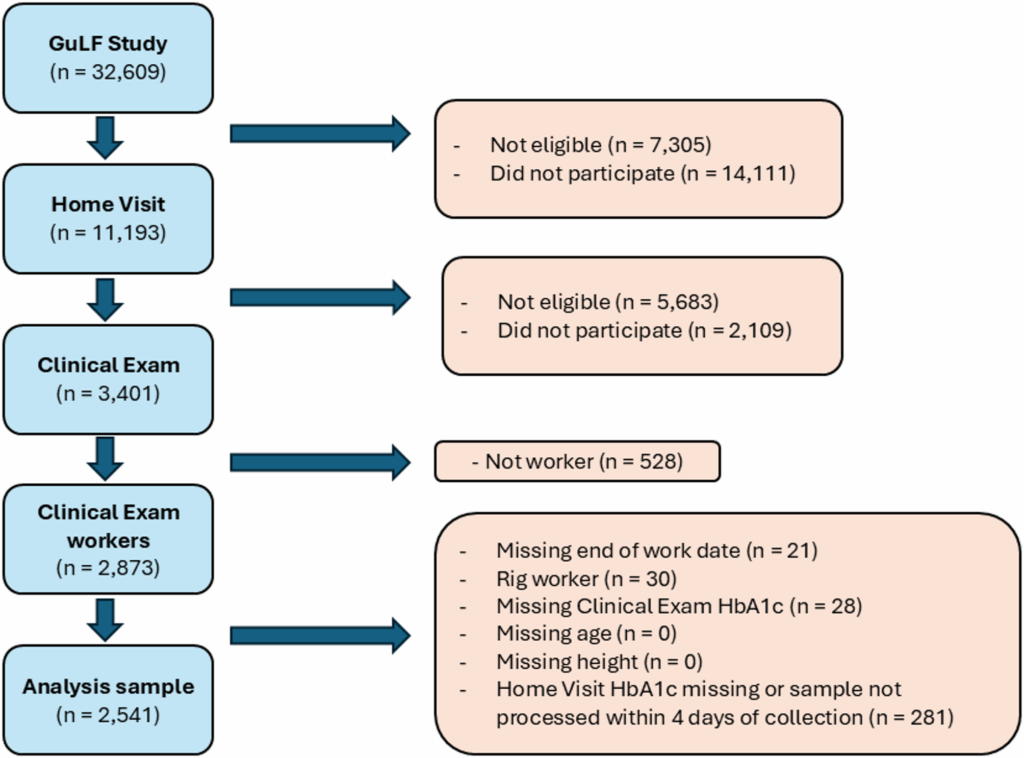
The aftermath of the 2010 Deepwater Horizon oil spill continues to ripple through scientific research, with a recent study shedding light on the potential health impacts faced by cleanup workers. The GuLF Study, an extensive cohort analysis, has revealed associations between exposure to volatile organic compounds during the oil spill cleanup and changes in glycemic regulation among workers.
Conducted between 2011 and 2013, the GuLF Study is the largest of its kind, involving over 32,000 participants who either worked on the oil spill cleanup or received safety training. The study focused on 11,193 individuals, predominantly residing in Gulf Coast states, who provided biological samples and underwent clinical exams over several years.
Understanding the Exposure
The study meticulously assessed exposure to volatile organic compounds, specifically benzene, toluene, ethylbenzene, and xylenes (BTEX), known to be prevalent in oil spills. Industrial hygienists employed a combination of personal exposure data and area measurements to estimate individual exposure levels. This data was used to create a job-exposure matrix, categorizing over 3,000 exposure groups based on similar exposure distributions.
Participants’ self-reported tasks during the cleanup were crucial in linking them to specific exposure groups. The study aimed to estimate cumulative exposure by summing the highest daily exposure levels across all days worked on the spill.
Health Outcomes and Analysis
The primary health outcome examined was the level of glycated hemoglobin (HbA1c), a marker of long-term blood glucose levels. The study analyzed HbA1c at two points: during the initial home visit and a subsequent clinical exam conducted three years later. The findings indicated a complex relationship between BTEX exposure and HbA1c levels.
“Exposure to the aggregated sum of BTEX was suggestively positively associated with latent, untreated initial HbA1c, but the relationship was more complicated with latent, untreated final HbA1c 3 years later,” the study noted.
Interestingly, the study observed an inverted-U pattern in the association between BTEX exposure and HbA1c levels, with elevated levels in the second and third quartiles of exposure, but not in the fourth quartile.
Expert Insights and Implications
Experts suggest that the observed patterns could be indicative of the endocrine-disrupting properties of BTEX chemicals. Previous studies have shown similar non-monotonic dose-response patterns with other endocrine disruptors, which could explain the inverted-U shape seen in this analysis.
Dr. Emily Choi, a researcher who has studied the impact of benzene on insulin resistance, commented, “The findings align with previous research indicating that endocrine disruptors can have complex effects on metabolic processes.”
Stratified Analyses
The study also conducted stratified analyses based on body mass index (BMI), area deprivation index (ADI), and race. Among obese participants, the association between BTEX exposure and HbA1c was more pronounced, suggesting that individuals with higher adipose tissue may experience prolonged exposure durations due to chemical accumulation in fatty tissues.
However, the analysis did not reveal significant differences in patterns across ADI or racial groups, which may be attributed to the complexity of socio-economic and environmental factors influencing health outcomes.
Challenges and Future Directions
While the study provides valuable insights, it also highlights challenges in assessing long-term health impacts of disaster-related exposures. The reliance on post-exposure HbA1c measurements limits the ability to compare pre- and post-exposure levels directly. Nonetheless, the study’s robust design, including the use of multiple imputation for missing data, strengthens its findings.
Further research is needed to unravel the physiological mechanisms underlying the observed associations. Longitudinal studies with pre-exposure baseline measurements could offer more definitive insights into the health impacts of BTEX exposure.
“There are no indications of monotonic trends between exposure to these chemicals and HbA1c, and there was substantial overlap among the estimates,” the study concluded, emphasizing the need for continued investigation.
This study marks a significant step in understanding the health consequences faced by oil spill cleanup workers, underscoring the importance of protective measures and ongoing monitoring of exposed populations. As the world grapples with the environmental and health impacts of industrial disasters, such research is crucial in guiding policy and protective strategies for affected communities.






